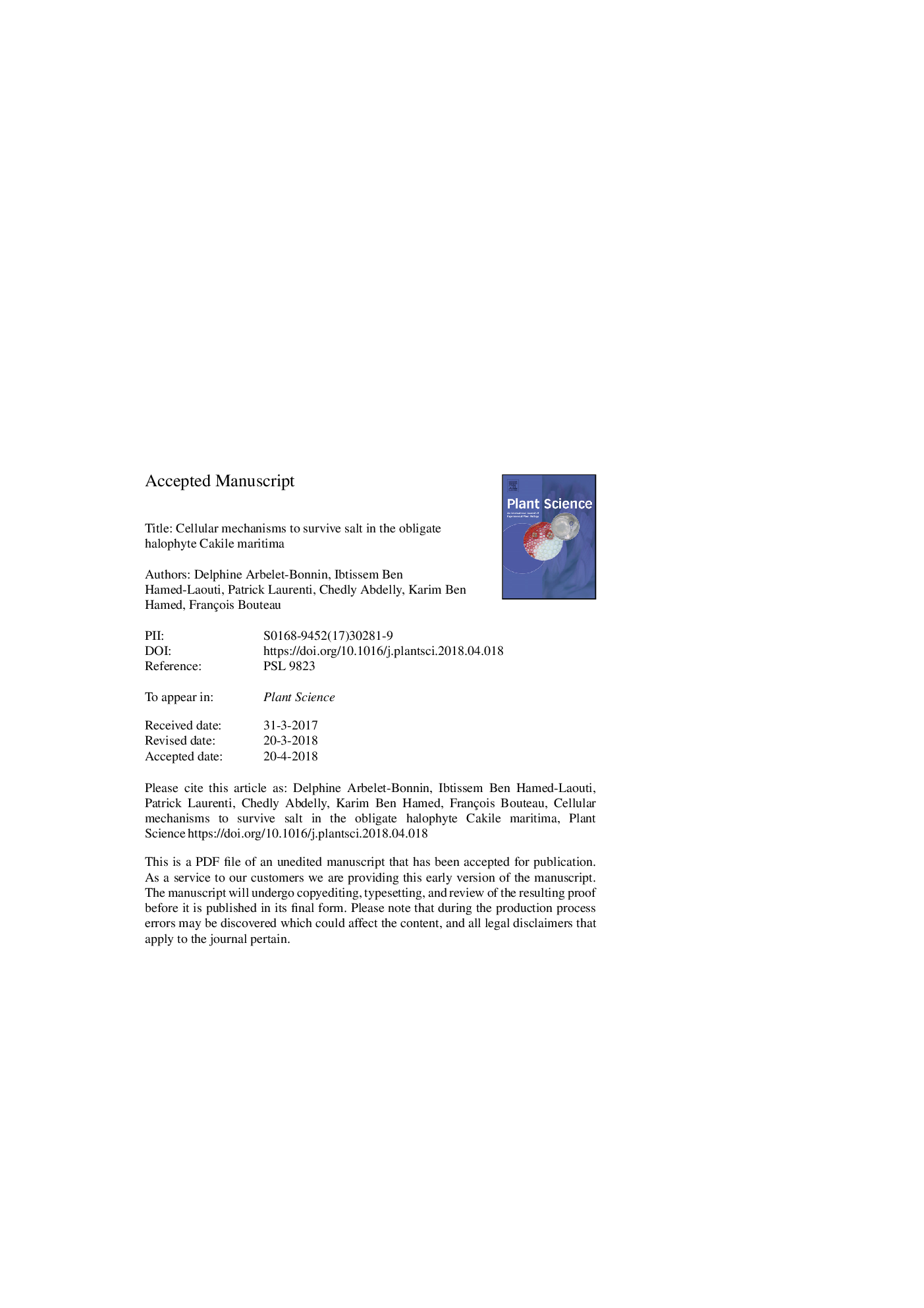| Article ID | Journal | Published Year | Pages | File Type |
|---|---|---|---|---|
| 8356533 | Plant Science | 2018 | 20 Pages |
Abstract
We recently identified two behaviours in cultured cells of the salt accumulating halophyte Cakile maritima: one related to a sustained depolarization due to Na+ influx through the non-selective cation channels leading to programmed cell death of these cells, a second one related to a transient depolarization allowing cells to survive (Ben Hamed-Laouti, 2016). In this study, we considered at the cellular level mechanisms that could participate to the exclusion of Na+ out of the cell and thus participate in the regulation of the internal contents of Na+ and cell survival. Upon addition of NaCl in the culture medium of suspension cells of C. maritima, we observed a rapid influx of Na+ followed by an efflux dependent of the activity of plasma membrane H+-ATPases, in accordance with the functioning of a Na+/H+ antiporter and the ability of some cells to repolarize. The Na+ efflux was shown to be dependent on Na+-dependent on Ca2+ influx like the SOS1 Na+/H+ antiporter. We further could observe in response to salt addition, an early production of singlet oxygen (1O2) probably due to peroxidase activities. This early 1O2 production seemed to be a prerequisite to the Na+ efflux. Our findings suggest that in addition to the pathway leading to PCD (Ben Hamed-Laouti, 2016), a second pathway comprising an SOS-like system could participate to the survival of a part of the C. maritima cultured cells challenged by salt stress.
Related Topics
Life Sciences
Agricultural and Biological Sciences
Plant Science
Authors
Delphine Arbelet-Bonnin, Ibtissem Ben Hamed-Laouti, Patrick Laurenti, Chedly Abdelly, Karim Ben Hamed, François Bouteau,
